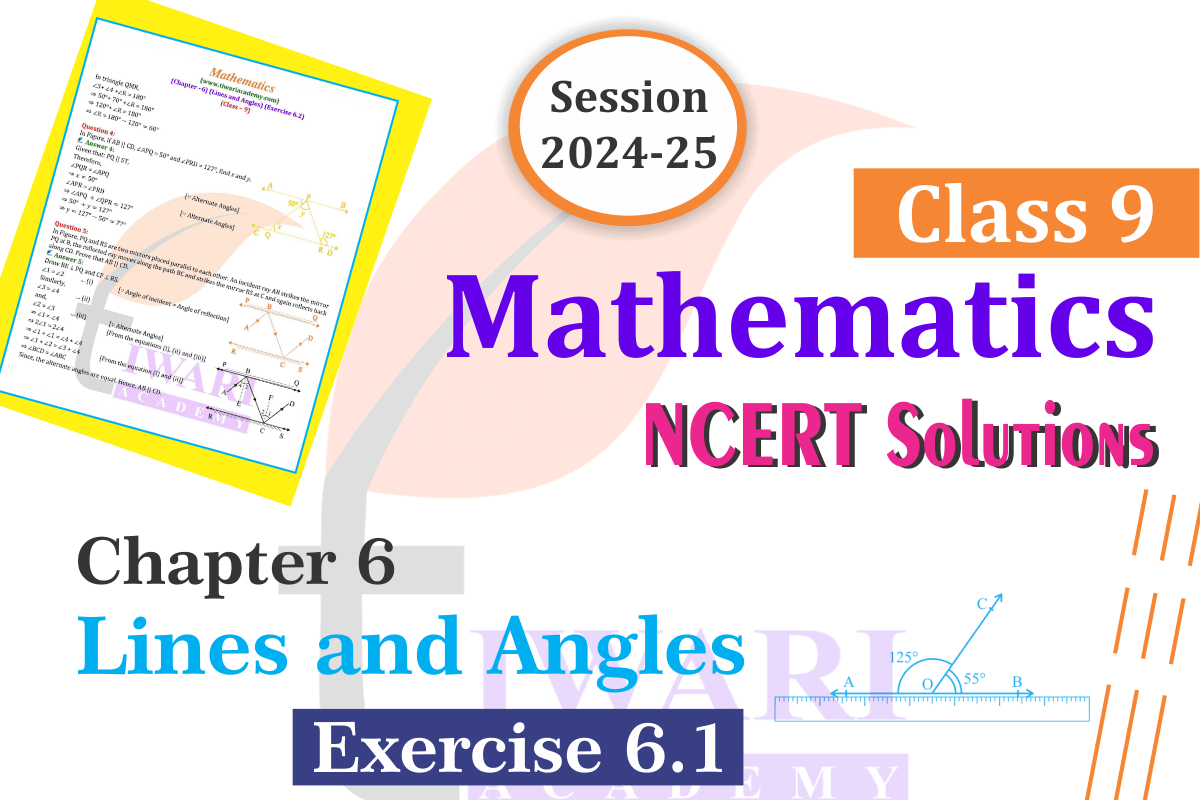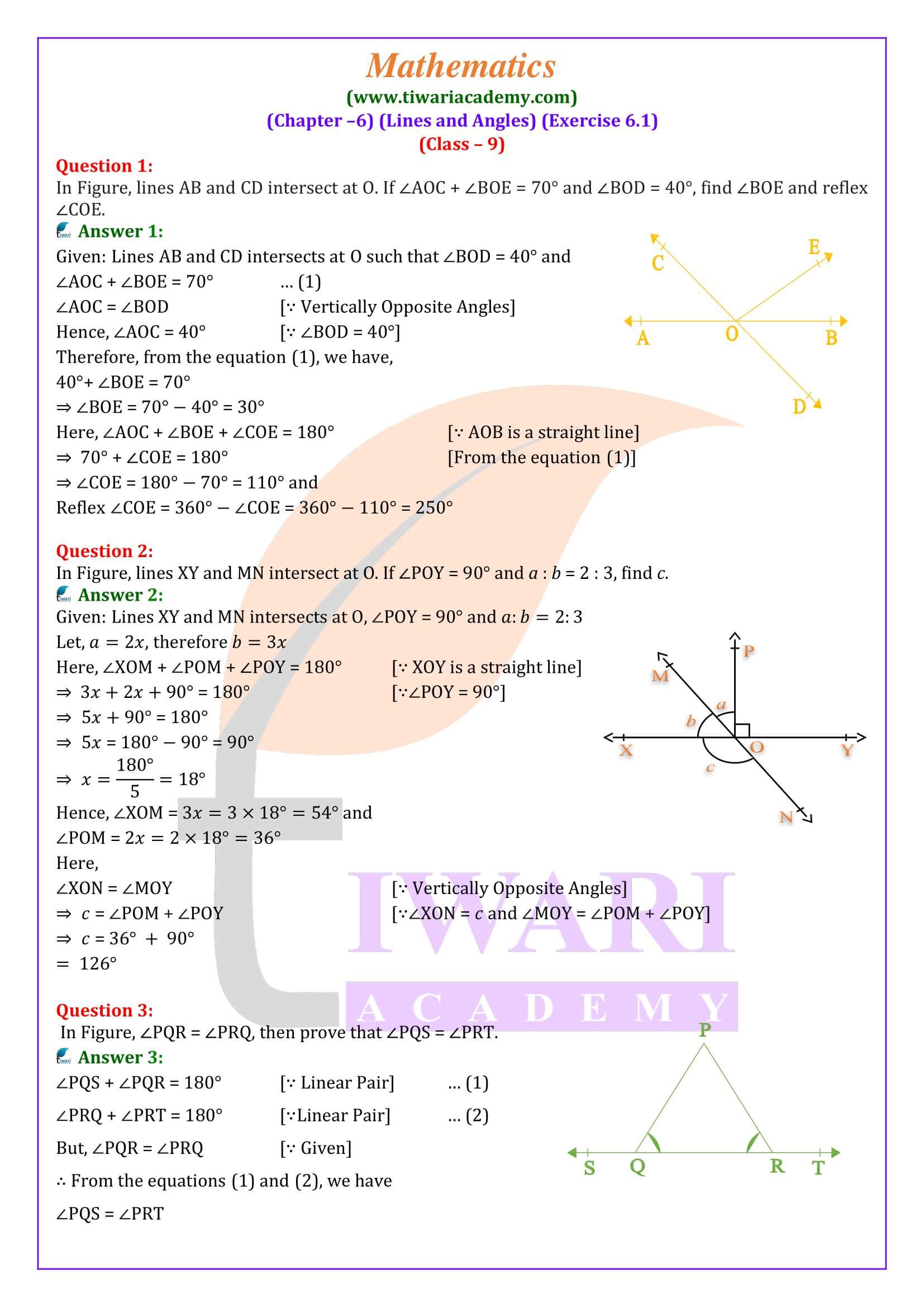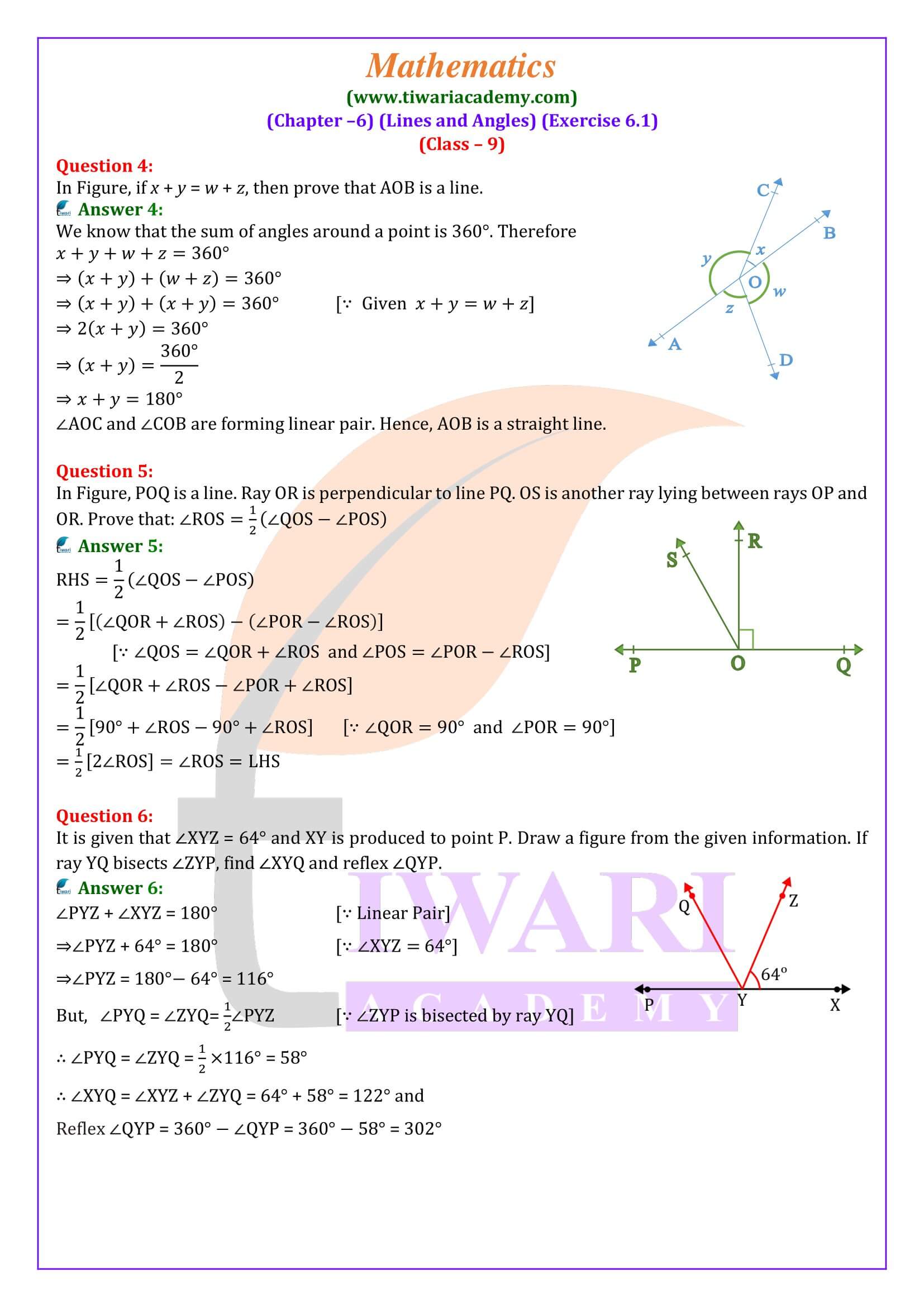NCERT Solutions for Class 9 Maths Chapter 6 Exercise 6.1 Lines and Angles in Hindi Medium and English Medium final exams updated for academic session 2025-26. Questions are modified as per the revised curriculum based on new textbooks for CBSE and State boards.
Class 9 Maths Exercise 6.1 Solutions in Hindi and English Medium
| Class: 9 | Mathematics |
| Chapter: 6 | Exercise: 6.1 |
| topic: | Lines and Angles |
| Content: | NCERT Solutions and Extra Questions |
| Session: | CBSE 2025-26 |
| Medium: | Hindi and English Medium |

Class 9 Maths Chapter 6 Exercise 6.1 Solution in Hindi and English
UP Board students also can find here UP Board Solutions for Class 9 Maths Chapter 6 exercise 6.1 in Hindi Medium. Answers of all questions of ex. 6.1 are given here in PDF format as well as to view online without downloading. 9th Maths exercise 6.1 Videos solutions in Hindi and English Medium are available to use freely without any login or password. NCERT Questions are explained in simplified language so that students can understand easily.
What to learn in Class 9 Maths Chapter 6 Lines and Angles
In Chapter 5 of Class 9 Mathematics, you learned that to draw a line requires a minimum of two points. You have also studied some axioms, and with the help of these axioms, you have tested other statements. In Class 9 Maths NCERT Textbook (https://ncert.nic.in/) chapter 6, you will explore the properties of the angles that form when drawing two lines and also the properties of angles when a line crosses two or more parallel lines at different points. Additionally, you will use these properties to prove some statements using deductive logic. You have already verified these statements through some activities in previous classes.
Lines and Angles in daily life
In your daily life, you see different types of angles between the edges of flat surfaces. To create a uniform model using flat surfaces, you must have a complete understanding of angles. For example, suppose you want to model a hut to be placed in a school display using bamboo poles. Imagine how you would do it? This will keep some sticks parallel to each other, and some sticks will be bent. Whenever an architect has to plan a multi-story building, he has to draw intersecting lines and parallel lines at different angles. Without knowledge of the properties of these lines and angles, do you think she could attract the design of the building?
Applications of Lines and Angles
In science and mathematics, it is necessary to know the relationship between angles when rays (or line segments) are parallel or cross each other. If we wish to find the height of a tower or the distance between a ship from a lighthouse, it is necessary to know the angle between the horizontal and the line of sight. Several other examples can be given where lines and angles are used. In later chapters on geometry, you will use these properties of lines and angles to achieve increasingly useful properties.
Use of Lines and Angles in Science
In science, you study the properties of light by drawing ray diagrams. For example, to study the refractive property of light when it enters from one medium to another, the properties of encapsulating lines and parallel lines are used. When two or more forces act on a body, draw a diagram in which forces are represented by directed line segments to study the net effect of forces on the body.
Which question is most important in exercise 6.1 of class 9 Maths?
In class 9 Maths exercise 6.1, questions 2, 5 and 6 are often asked in most of the school examinations. So, these may be considered as an important one.
Is Exercise 6.1 of class 9 Maths difficult?
Exercise 6.1 of class 9 Maths is neither easy nor difficult. It is based on the concept of linear pair axiom. If the concepts are clear, it is so easy; otherwise, students feel difficulty in ex. 6.1 of 9th Mathematics.
Are the examples of 9th math ex. 6.1 also important for exams?
Examples are always important to understand the topic as well as to score in exams. It is advised to practice examples first before doing the exercises.
Which example of class 9 Maths exercise 6.1 is important?
There are a total of three examples based on exercise 6.1 in CBSE grade 9 Maths. Example number 2 is frequently asked in exams.
Which sums are the important sums of exercise 6.1 of grade 9th Maths?
Exercise 6.1 has three examples (examples 1, 2, 3) and six questions. Examples 2, 3, and questions 2, 5, 6 are the most important sums of exercise 6.1 because these sums have already come in the exam several times. These examples and questions can come in three or more than three marks.
Which problems of exercise 6.1 of class 9th Maths are considered as the most complicated to solve?
Examples 2, 3, and questions 5, 6 of exercise 6.1 of class 9th Maths are considered as the most complicated problems of this exercise to solve.
Question 5 and example 3 are proving questions, and most of the students face difficulty in these types of questions. In question 6, the figure is not given, and students face difficulty while making the figure. In example 2, students face difficulty in understanding the solution.
Which questions of exercise 6.1 of grade 9th Maths, students solve quickly?
Students quickly solve example 1 and questions 1, 2, 3, 4 of exercise 6.1 of grade 9th Maths because these questions are very easy and straightforward. Also, the solutions to these questions are not very lengthy.
How many days, students need to complete exercise 6.1 of class 9th Maths?
Students need a maximum of 2 days to complete exercise 6.1 of class 9th Maths if they give at least 1-2 hours per day to this exercise. This time also depends on student’s working speed, efficiency, capability and many other factors.



